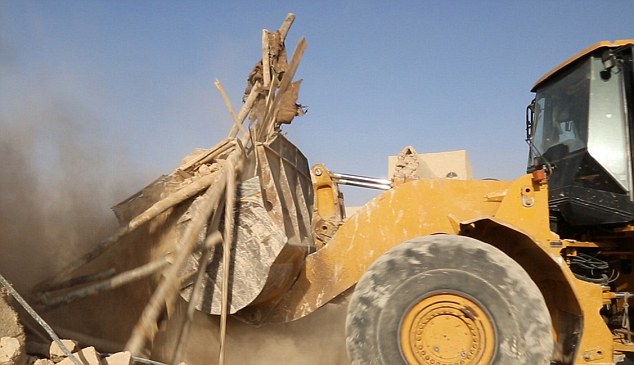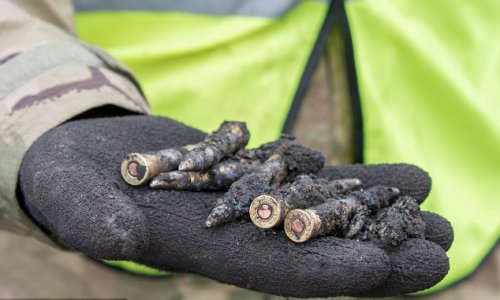ISIS militants have reportedly used dynamite to destroy an ancient temple situated in the Syrian archaeological site of Palmyra.
The Baalshamin temple had stood at the site for nearly 2,000 years and was considered one of the best preserved temple on the site.
Meaning 'Lord of Heaven', the temple was dedicated to the ancient pagan god of Baal.
Activists from the Britain-based Syrian Observatory for Human Rights confirmed that the temple of Baalshamin had been destroyed, suggesting it may have been dynamited one month ago.
The news comes after ISIS used a bulldozer to demolish the 1,500-year-old Mar Elian Monastery, a national Syrian treasure, which has stood in Al-Qaryatayn since 432 AD.
ISIS supporters shared the pictures online and praised them for destroying the building because God 'was not worshipped there'.
The also extremists captured more than 200 people when it seized Al-Qaryatayn on August 6 and took 100 of them to the group's de-facto capital of Raqqa.
The desecrated Assyrian monastery took its name from Saint Elian, who was martyred after refusing to denounce his Christianity at the hands of his father, a Roman officer. Many 'miracles' were attributed to St Elian, who was a doctor.
The church was built on the spot where he died and his remains still rest in a small sarcophagus in a small chapel near its main crypt.
When Mar Elian was renovated in 1969, the plaster which lined the walls was removed to reveal stunning murals of Jesus, Mary and prophets dating back to the 6th Century.
An Italian Jesuit priest, Father Paolo Dall'Oglio, began work to renovate the church one more time around ten years ago.
He was kidnapped by ISIS In July 2013 and although his fate is unknown, sources of the Assyrian International News Agency say he was killed by a Saudi-national upon capture.
Of the 230 people who were kidnapped by ISIS in Al-Qaryatayn a few weeks ago, the Syrian Observatory for Human Rights claims some were taken from a church.
Rami Abdulrahman, the head of the Observatory, told MailOnline that more than 100 of them - which may include Christians - have now been taken to ISIS's war-ravaged capital of Raqqa.
These latest acts of barbarity come after ISIS butchered one of Syria's most respected archaeologists because he refused to reveal the location of gold and priceless artefacts in the ancient city of Palmyra.
Khaled Assad, 82, was held hostage by ISIS for over a month before he was beheaded.
A Christian group said the abductions were the latest in a string of events that targeted their community, one of the oldest Christian populations in the Middle East.
ISIS has also destroyed dozens of churches and ancient archaeological sites in the past year.
The group sparked global outrage when its militants were filmed destroying a collection of priceless statues and structures inside a Mosul museum.
It later turned out that most of the 3,000-year-old sculptures were worthless were replicas of the real artefacts which are housed safely in the capital Baghdad.
After the footage was released in February, Mosul's exiled governor confirmed the vast majority were fakes but at least two of the destroyed structures were authentic.
Atheel Nuafi told Saudi-based Al Arabiya: 'One is a Winged Bull and the other was the God of Rozhan.'
The Winged Bull, which was seen being smashed by sledgehammers, was supposedly the same one which stood at the gates of Nineveh in the 7th century BC.
(dailymail.co.uk)




www.ann.az
Follow us !











